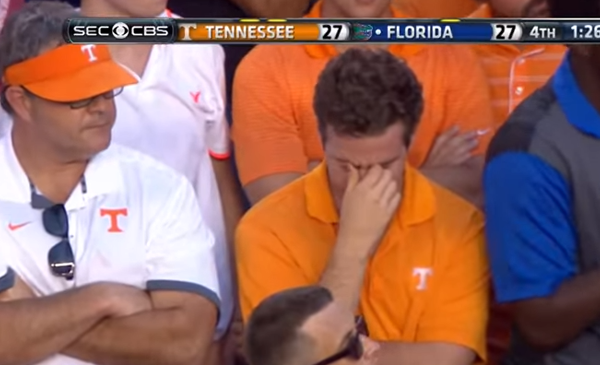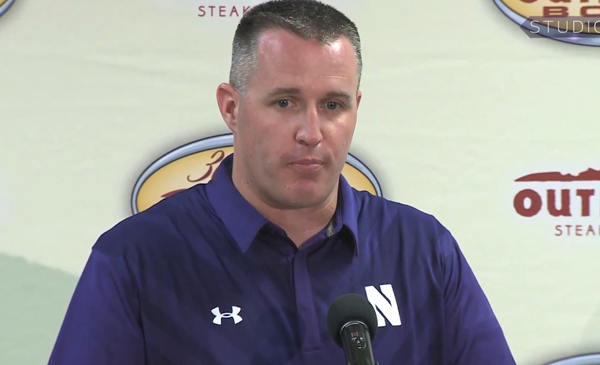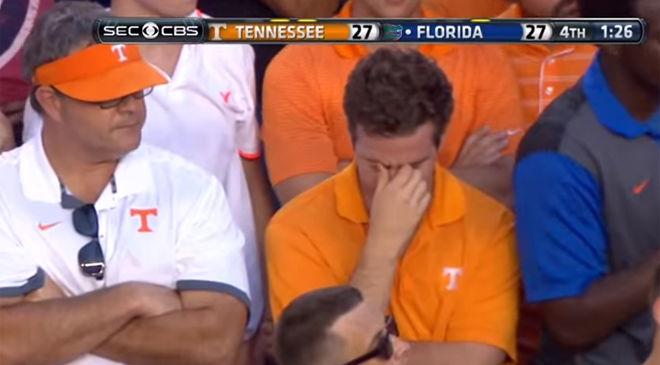Coordinators operate as college football programs canaries-in-the-coal-mine, or Uncle Elmer’s trick knee just before a tornado. Abrupt dismissal of a coordinator often suggests impending trouble, or damage control amid ongoing turmoil.
The relatively short shelf-life of most coordinators is reflective of today’s win-now college football landscape, albeit at warp-speed. This week alone, four programs coming off winning seasons parted ways with high-profile coordinators under unique circumstances, though all tied to the high-pressure stakes of big-time football.
Texas A&M got the ball rolling, “mutually” parting ways with offensive coordinator Jake Spavital. Spavital’s exit was the natural conclusion to come from losing a quarterbacking platoon in the last three seasons, and most notably former 5-star prospects Kyle Allen and Kyler Murray within weeks of each other.
Spavital’s departure from College Station opened a vacancy for Noel Mazzone, UCLA’s offensive coordinator for each of Jim Mora’s four seasons as Bruins head coach. Among the first things I learned on the UCLA beat a season ago was that the more vocal contingent of UCLA fans did not care for Mazzone’s play-calling.
Brett Hundley’s limited progression in three years under Mazzone, at times woeful offensive line play and abandonment of a power run-game garnered jeers from the Bruin faithful — some of it deserved. At the same time, UCLA never averaged fewer than 32.2 points per game in Mazzone’s tenure. In contrast, Texas A&M put up 27.8 per game this season under Spavital.
And that 32.2-point per game mark came this season, with UCLA rolling out true freshman Josh Rosen at quarterback.
Rosen looked shaky at times in September, as is to be expected of a true freshman, but developed nicely over the course of the season. He set a program record for consecutive passes without an interception.
Mazzone’s possible departure gives Mora an opportunity to bring on an offensive coordinator who will accentuate Rosen’s pro-style strengths, while at the same time maintaining the high-scoring pace UCLA established under Mazzone. But the search for greener grass can also lend itself to disappointment.
The most foremost cautionary tale is that of Georgia’s Mark Richt, who lost Mike Bobo to the head coaching vacancy at Colorado State last offseason. The pained howls of Georgia fans for Bobo to “run the dang ball” resonated across college football platforms during the offensive coordinator’s tenure, all while quarterback Aaron Murray registered record-setting numbers.
Well, Bulldog fans hungry for an old-school got their approach with Brian Schottenheimer. Schottenheimer took Georgia football back to the leather helmet era with his archaic play-calling in 2015. The Bulldogs finished 85th in scoring offense and Richt was forced out.
This story’s moral for UCLA fans is to hold off on the celebratory toasts until Mora makes a hire. While the Bruins have a chance to upgrade from Mazzone, Mora’s entire coaching history pre-2012 goes back to the NFL, where creativity is as stifled as in an Orwellian future.
Schottenheimer’s failed tenure at Georgia is the quintessential PSA against coordinator changes, but 2015 also set the standard for which head coaches making changes should aspire. Mike Leach fired Mike Breske last offseason, just a year removed from Washington State ending its 10-year bowl drought in part due to Breske’s defense.
The Cougars suffered a major regression in 2014, and Leach turned to Alex Grinch. Grinch’s first season heading the Washington State defense fueled a breakout year on the Palouse.
Pac-12 counterpart Arizona seeks a similar revival from its defense after head coach Rich Rodriguez fired Jeff Casteel this week. The Casteel ouster would perhaps best crystallize the tenuous role of coordinators in college football, were it not for another departure earlier this week, but more on that in a moment.
Casteel was a longtime Rodriguez lieutenant, crafting the 3-3-5 stack at West Virginia that gave the Mountaineers fearsome defenses on par with their explosive offenses. John Bacon’s book Three and Out, chronicling Rodriguez’s abbreviated tenure at Michigan, suggests some of the Wolverines’ fundamental failures came down to coordinators other than Casteel calling the Michigan defense.
Adding Casteel was the necessary ingredient to make the formula work at Arizona. The Wildcats had a rocky Year 1, due in part to predecessor Mike Stoops — a defensive-minded coach — ironically leaving behind an empty cupboard on that side of the ball. But Year 2 showed measurable progress under Casteel, and Year 3’s Pac-12 South championship owed much to defensive star Scooby Wright flourishing in the 3-3-5.
Wright’s injury-plagued 2015, and a rash of lost starts across the linebacker corps, didn’t make Casteel’s job easy. However, the Wildcats’ inability to muster much defensively all year cast enough doubt on that 3-3-5 that Rodriguez is seeking change.
My guess is that Rodriguez will basically say what he wants (blitzing scheme, etc) and then let the DC do the rest.
— Jason Scheer (@JasonScheer) January 7, 2016
A potential shift away from the 3-3-5 mirrors the forthcoming change at Pac-12 South rival USC, where Clay Helton released Justin Wilcox immediately after December’s Pac-12 Championship Game.
Wilcox oversaw a 3-4 scheme at Washington that transformed the Huskies in just one season. They’d gone from being one of the nation’s most porous defenses in 2011, to a power in 2012, relying on Danny Shelton’s presence in the middle and Shaq Thompson’s play-making ability as a freelancing linebacker.
USC didn’t have the personnel for Wilcox’s scheme, and his timid blitzing packages made the defensive coordinator a favorite target among Trojans fans. Helton’s desire to shift schematic focus became plainly evident in the Holiday Bowl, where USC operated with a 4-3 base. The result was the best game the Trojan defensive line played all season, starting with tackle Delvon Simmons.
Wilcox is an intriguing possibility for Tennessee, a program at which he worked for two years under Derek Dooley. In much the same vein Washington saw instant improvement with Wilcox’s arrival in 2012, the Vols experienced dramatic regression upon his departure — regression that began to really turn around this season under John Jancek.
Jancek’s departure from Tennessee this week is the most surprising of this year’s coordinator moves. The Vols didn’t endure the kind of slump Arizona experienced this season under Casteel, despite a bevy of injuries in the secondary.
Tennessee parted ways with DC John Jancek, whose defense allowed 20 ppg this season. Arizona allowed 20+ in a QUARTER six times.
— Michael Lev (@MichaelJLev) January 7, 2016
Tennessee boasted the nation’s No. 16-ranked scoring defense, 17th-ranked red-zone defense and third-ranked third-down defense. “Mutual” departures are always fishy, and Jancek’s case is especially so, given the retweet-spree no which he went Wednesday.
Tennessee just completed a season in which it will finish with its first end-of-season Top 25 ranking in eight years, but the Vols also fell short of an SEC East division championship. Tennessee was pretty clearly the division’s best team by season’s end, but squandered some huge opportunities — one in particular.
Florida’s fourth-down conversions in October’s meeting ostensibly denied the Vols’ their first SEC Championship Game appearance since 2007. While no one with knowledge of the Jancek-UT split will ever say so, it’s easy for skeptics to point to one game — ONE GAME! — costing the defensive coordinator’s position.
The lesson this offseason for all coordinators, if it wasn’t already ingrained in them, is to keep the resume up-to-date at all times. There’s no telling when Uncle Elmer’s trick knee will start acting up.








